The Grand Duchy of Luxembourg, or simply Luxembourg, is a small Western European country that is best known for being one of the richest countries in the world and for being a favorite tourist destination of history buffs. Luxembourg combines the fantastic and stylish flavors of French cuisine with the heartiness associated with German food. This small country is bordered by France, Germany, and Belgium. Its international influences are tempered by local flavors, particularly those that have peasant origins, reflecting the country’s history. All of these are combined together to give visitors a fantastic gastronomic experience. After all, there is a reason why Luxembourg has more Michelin-rated restaurants than any other country across the globe in terms of per capita and per square meter. For comfy accommodation, you will find plenty of great hotels to stay. If you would prefer a home-away-from-home experience, an Airbnb vacation rental is your best bet. Now that accommodation is sorted, continue reading to learn more about the top traditional foods in Luxembourg.
1. Quetschentaart (plum tart)

Quetschentaart is a cherished traditional dessert in Luxembourg, known for its delicious simplicity. This popular food in Luxembourg consists of a buttery and flaky tart base filled generously with ripe damson plums known as “quetsche” in the local Luxembourg dialect. These plums are halved and arranged in a neat, concentric pattern on the crust, creating a visually appealing and mouthwatering dessert. The plums are lightly sweetened with sugar and often complemented with a touch of cinnamon for added flavor.
It’s a beloved dessert enjoyed on various occasions, symbolizing both the country’s cultural pride and its appreciation for the simple pleasures of life.
2. Kuddelfleck (Luxembourg tripe)
Editor's Note: There's no photo available at the time of writing
Kuddelfleck, considered by some as the unofficial national dish of Luxembourg, came into being under the premise of not letting any part of an animal butchered for food go to waste. This dish is prepared by coating tripe with breadcrumbs and then fried. It is then served with either a white wine sauce or a spicy tomato sauce, with some boiled potatoes as a side dish.
3. Judd mat Gaardebounen (smoked pork collar with broad beans)
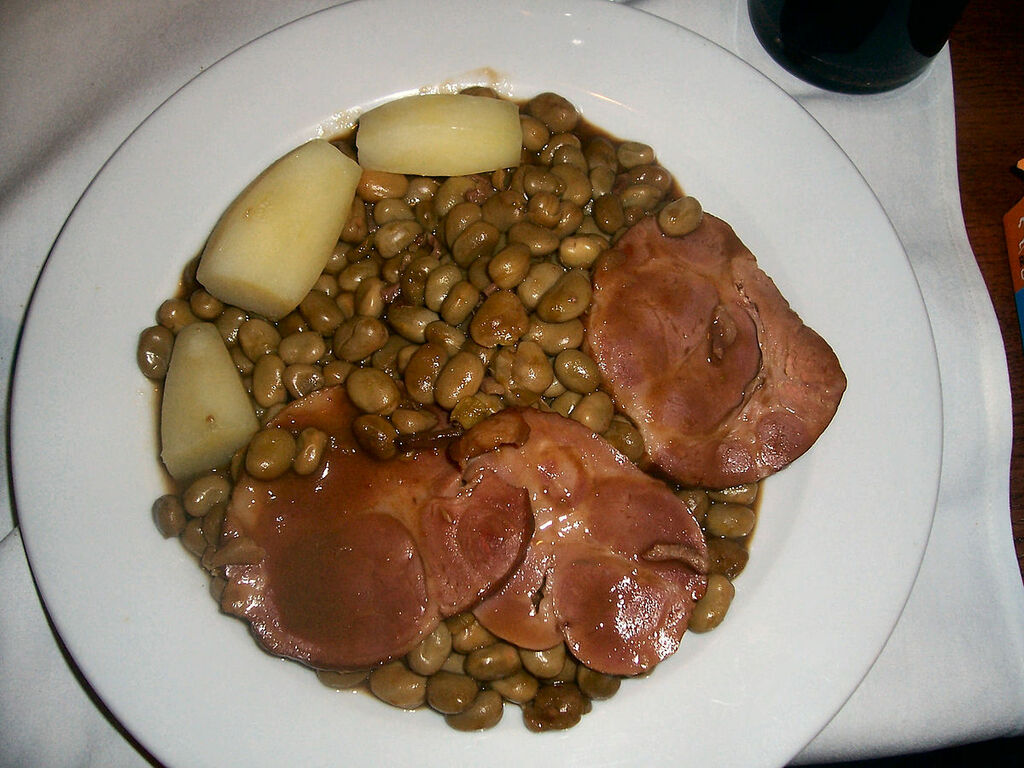
Judd mat Gaardebounen is another dish that is considered as a serious contender for the title of Luxembourg’s national dish. This dish sounds deceptively simple, as its main ingredients are pork and beans. Its preparation, however, is anything but simple: the pork is cured or smoked before it is boiled. The meat is then cooked with carrots, celery, leeks, as well as spices such as cloves, bay leaves, and peppercorn, in a wine bath for a couple of hours. Meanwhile, the beans are blanched. The sauce is a combination of meat stock, bacon, onions, and flour. These three are then combined and seasoned with salt and pepper and served with some boiled potatoes. Pork neck is the preferred section used in this dish, although other cuts may be used. The dish is traditionally prepared during early summer, which is when the beans are still young and tender.
You might be interested in these Airbnbs!
4. Träipen (Luxembourg-style blood sausage)
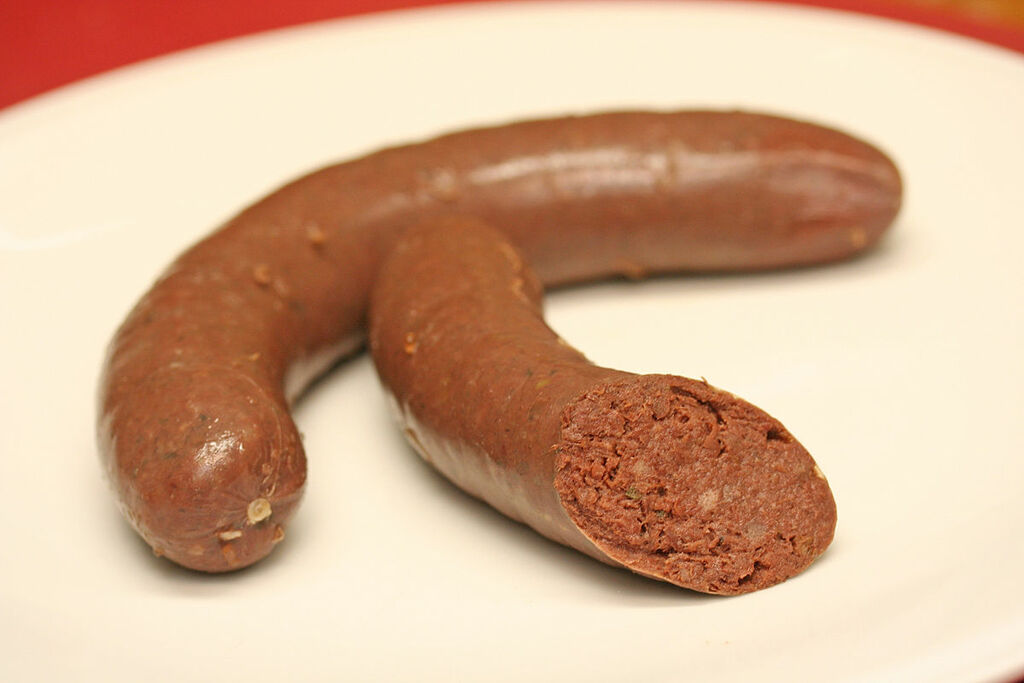
Träipen is Luxembourg’s version of a blood sausage. Besides blood, it also comes with meat (particularly pork and other bits), some vegetables, usually cabbage and onions, and white bread, and is flavored by some spices. These ingredients are wrapped in intestine cases and then boiled until the sausage becomes crispy. This dish follows the “waste not, want not” principle and uses offal and other scraps of pork. Boiled potatoes and apple sauce commonly accompany the sausages. This dish is traditionally eaten on Christmas eve, right after the Midnight Mass. However, it can also be prepared on All Saints’ Day and the first Sunday of the Lenten season.
Luxembourg Tour Guide
Miriam Meda
I inspire and help you on your trips to Belgium with my project, Curiositas Mundus. My goal is to avoid you any surprises once you land in this beautiful and small country. Traveling with kids? No problem. Are you a high school teacher preparing for your next study trip? No worries. Families? Friends? Solo travel? VIP? Companies? Universities? Lost souls? Restless minds? Physical challenges or difficulties? All of you are welcome! My specialty is the preparation of tours all over the country. I can guide you through the Belgian streets, museums, bars, chocolate paradises and other places of interest. I want my services to be cultural, responsible, and engaged with the local people. I already have ideas to improve that relationship tourists-inhabitants and to work also with local non-profit associations and businesses :-) In a more personal way, but also related to this nice job of guiding strangers from all over the world, I am a crazy learner of history (especially European history), art, literature, comics (long life to Marvel), languages (you can contact me in English, French, Spanish or Dutch; now I am trying to learn Japanese), philosophy, sociology, politics, videogames and so on! Above all, I have tons of curiosity about everything that surronds me.
5. Friture de la Moselle (fried river fish)
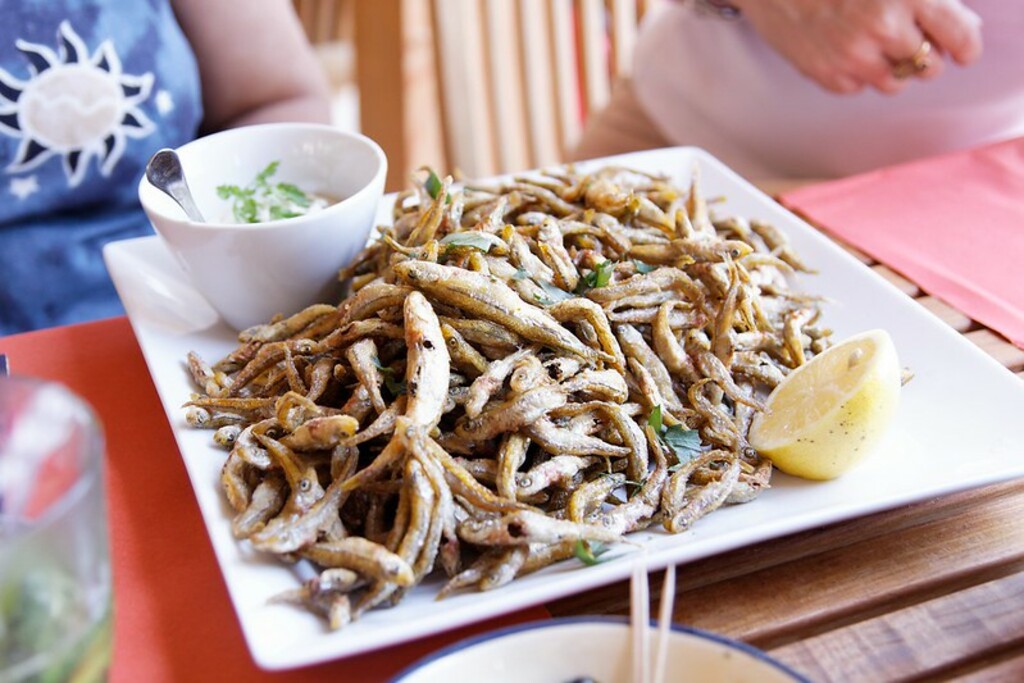
Friture de la Moselle, or simply Fritür, is a dish made from small fish seasoned with salt and pepper, dipped in lemon juice and batter, and deep-fried until they’re crispy. The fish may be gutted or left whole, depending on their size. The food is traditionally served with a local Moselle white wine, with a wedge of lemon on the side to squeeze over the fried fish. It is eaten using one’s fingers.
6. Huesenziwwi (rabbit stew)
Editor's Note: There's no photo available at the time of writing
Are you wondering what to eat in Luxembourg? Look no further than a bowl of huesenziwwi, a hearty and flavorful stew that consists of tender rabbit meat, typically marinated in wine and aromatic herbs, infusing the dish with a rich and earthy flavor. The rabbit is slow-cooked to perfection, resulting in tender, succulent pieces of meat. It is then combined with a creamy sauce made from sour cream and a dash of cognac for added depth.
Huesenziwwi is traditionally served with pasta, providing a satisfying contrast to the creamy sauce.
7. Stäerzelen (Luxembourgish dumplings)

Did you know that Luxembourg has its own version of dumplings as well? Called stäerzelen, the dish is prepared by boiling buckwheat flour in water with some salt. It is usually served with a drizzle of milk, cream, or some other sauce. Sometimes, it may also come with bacon bits or cheese. The dish’s name came from “stäerzel”, which means “spoonful”, in reference to how the dumplings were shaped using a spoon dipped in hot fat.
8. Verwurelter (traditional Luxembourgish donuts)
Think of verwurelter as Luxembourg’s own take on the doughnut. This tasty pastry is prepared by twisting dough - made from flour, yeast, eggs, sugar, butter, milk, and salt - and then deep-fried until each knot turns golden brown. These are then served with a sprinkle of sugar, either granulated or powdered, depending on who’s preparing the pastries. Verwurelter can be chilled or warmed up before eating. This pastry is traditionally made in time for Fuesecht, a festival in Luxembourg.
9. Éisleker ham

Éisleker Ham, otherwise known as Jambon d'Oesling, traces its roots to Oesling region, which can be found in the northern section of Luxembourg. The meat is taken from the hind legs of a pig. Traditionally, it is marinated in herbs and vinegar before being smoked by hanging the meats in the chimney. Another alternative to preparing the ham is by curing it in brine before smoking it for around one week. The ham is served chilled, sliced paper-thin, with a glass of wine. Side dishes may include salad, bread, and potato chips.
10. Gromperekichelcher (potato fritters)
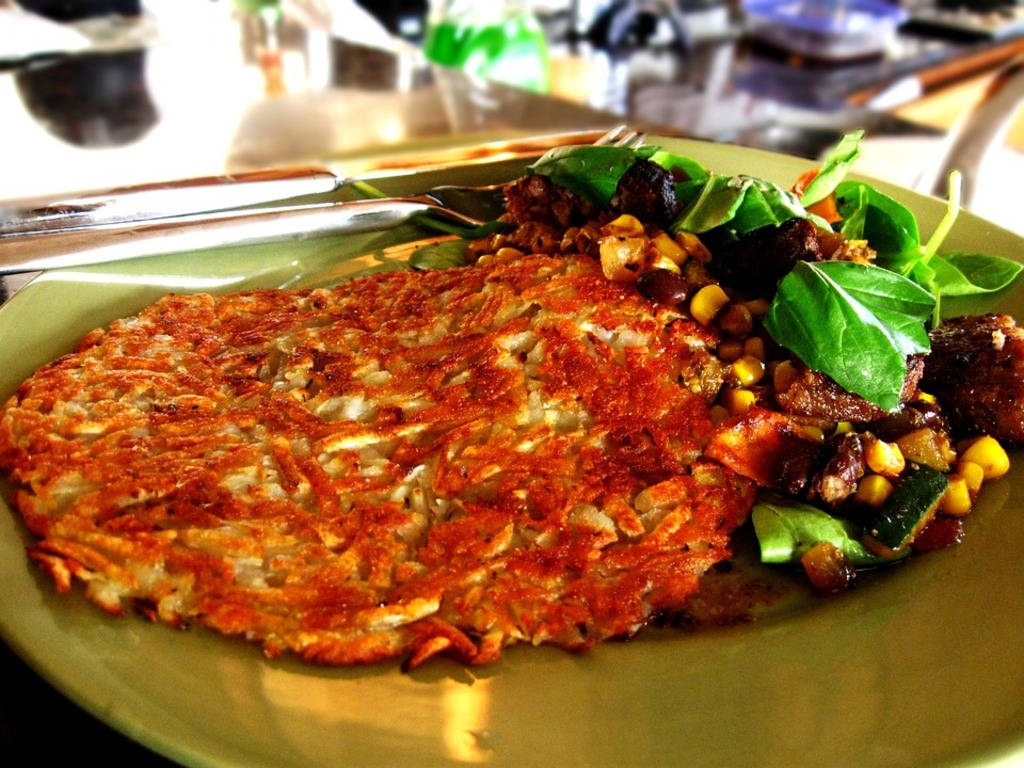
Luxembourg is big on potatoes, usually serving the root crop boiled as a side dish to their other traditional food. Gromperekichelcher, however, puts this humble vegetable in the spotlight. Potatoes are grated and mixed with flour, parsley, onions, garlic, eggs and shallots, and then flavored with salt, pepper, and nutmeg. Dollops are then fried in hot oil to make crispy fritters that can be eaten on their own or as a side dish. These may be served with an apple compote that diners can dip the fritters in. Gromperekichelcher can be found in Luxembourg fairs and Christmas markets.
11. Bouneschlupp (traditional Luxembourgish soup)
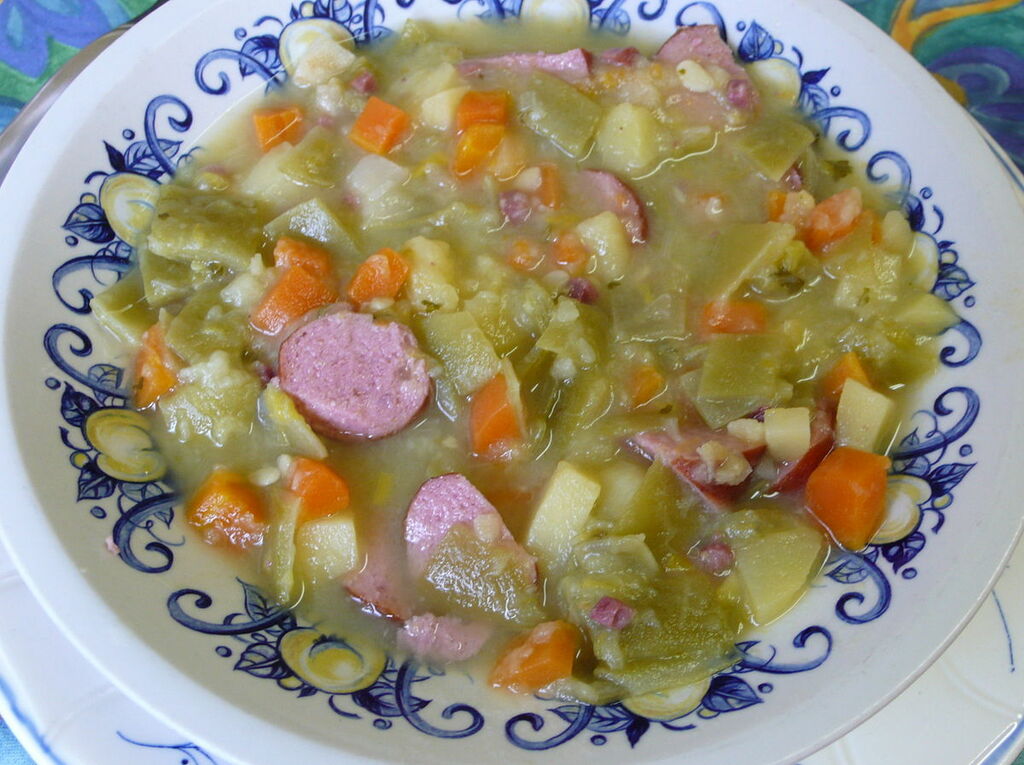
Bouneschlupp is a Luxembourg soup. Its base ingredients are green beans, potatoes, onions, and bacon, although other vegetables may be added in the mix such as carrots, leeks, and celery, as well as sausages. This dish may be served on its own or with a side dish, usually gromperekichelcher, with sour cream provided on the side. Versions of this dish can be found in Luxembourg’s neighboring countries, Germany, France, and Belgium.
12. Rieslingspaschteit (Riesling pork pies)
Rieslingspaschteit is a log-shaped pie stuffed with meat and Riesling wine jelly. It is easily distinguishable, thanks to the hole in the middle of a crown at the top of each pastry. The meat may either be pork or veal. The pie is usually served cold and enjoyed with a glass of Riesling wine. Locals usually enjoy this during winter.
Luxembourg: big on flavors and servings
Luxembourg offers plenty of places to visit and things to do, so travelers who are looking for their next gastronomic experience need not look further than this city. While the country is small, Luxembourg’s food culture is big on flavors and servings, as this list shows. Luxembourg more than delivers in giving visitors a gastronomic experience, having combined the best of French and German cuisines and injecting their own unique flavors.
Frequently asked questions about traditional foods in Luxembourg
History
Get Trip101 in your inbox
Unsubscribe in one click. See our Privacy Policy for more information on how we use your data







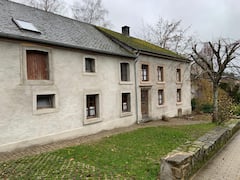















Create an account to